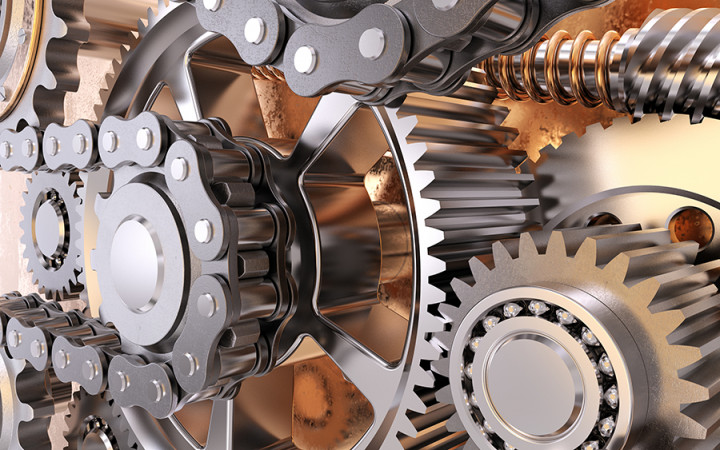Today’s Wonder of the Day was inspired by Jane. Jane Wonders, “How do gears work?” Thanks for WONDERing with us, Jane!
Do you remember your first bicycle? For many kids, that first set of two wheels is a really big deal. Many adults can still remember their first bicycle and how it made them feel.
Most kids start out with a small bicycle with training wheels. Eventually, the training wheels come off and you're riding on just two perfectly-balanced wheels. As you get bigger, you outgrow your first bicycle and move on to a bigger one.
By your teenage years, you're probably riding a 10-speed bicycle. Although you don't need training wheels to learn how to ride a 10-speed, it can take a while to learn how to shift from one speed to another and when to use which speed.
Those miraculous 10-speed bikes — and the automobiles you'll drive one day — make great use of simple parts known as gears. Gears are sets of wheels with teeth (often called cogs) that interlock in such a way that, when one wheel turns, it also turns the other.
Gears exist to transfer power from one part of a machine to another. For example, on a bicycle, gears (connected by a chain) transmit power from the pedals to the back wheel. Likewise, in an automobile, energy moves from the engine to the crankshaft and then via gears to the driveshaft that powers the wheels.
Gears come in a wide variety of sizes and shapes, because they can be customized to perform many different tasks in all sorts of machines. Some of the most popular types of gears you may hear about include helical gears, bevel gears, spur gears, worm gears, rack and pinion gears, and sun and planet gears.
Gears can be connected together to accomplish three basic tasks. First, gears can be used to increase speed. For example, if a gear with more teeth passes power to a gear with fewer teeth, the second gear will turn more quickly.
Gears can also be used to increase force. If the second gear in a pair has more teeth than the first, it will turn more slowly (the opposite of the scenario just described above) but with more force.
Lastly, gears can also be connected in a way that allows them to change the direction of a force. Automobiles are a good example of this. The gearbox in the rear axle of a rear-wheel drive car uses gears to turn the driveshaft's force 90 degrees to turn the rear wheels.
The only thing gears can't do is increase force and speed at the same time. Force and speed share an inverse relationship. If gears increase speed, they give you less force. If they increase force, they give you less speed.
So who came up with these incredible devices? Some historians believe gears date back to at least the 27th century B.C. when they were used in a chariot in China. The ancient Greeks, including Aristotle, also described gear-like devices. Greek mathematician Hero of Alexandria was the first to write specifically about gears in 50 A.D.
However, the real inventor of the gear may be Mother Nature. Scientists have found a hopping insect called the Issus that has hind leg joints with interlocking teeth that synchronize the insect's legs when it jumps. While ancient man may have developed gears thousands of years ago for other reasons, it appears Mother Nature had already invented the gear long before that!




